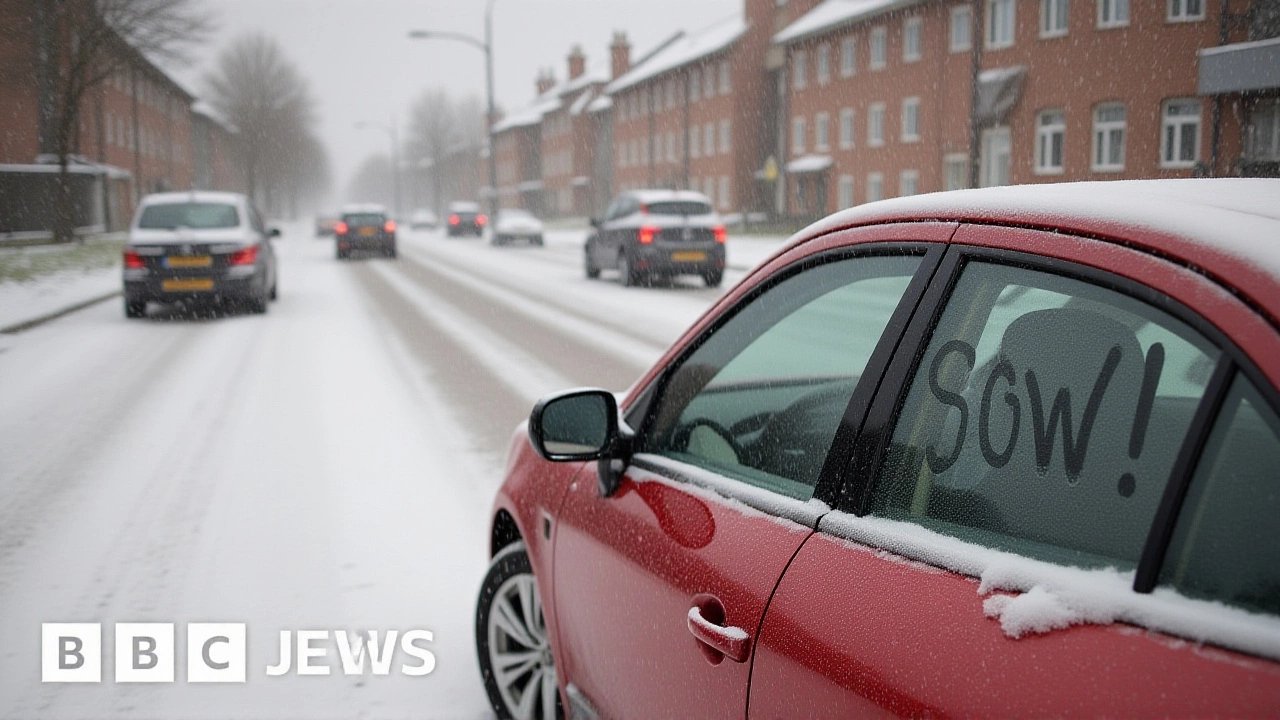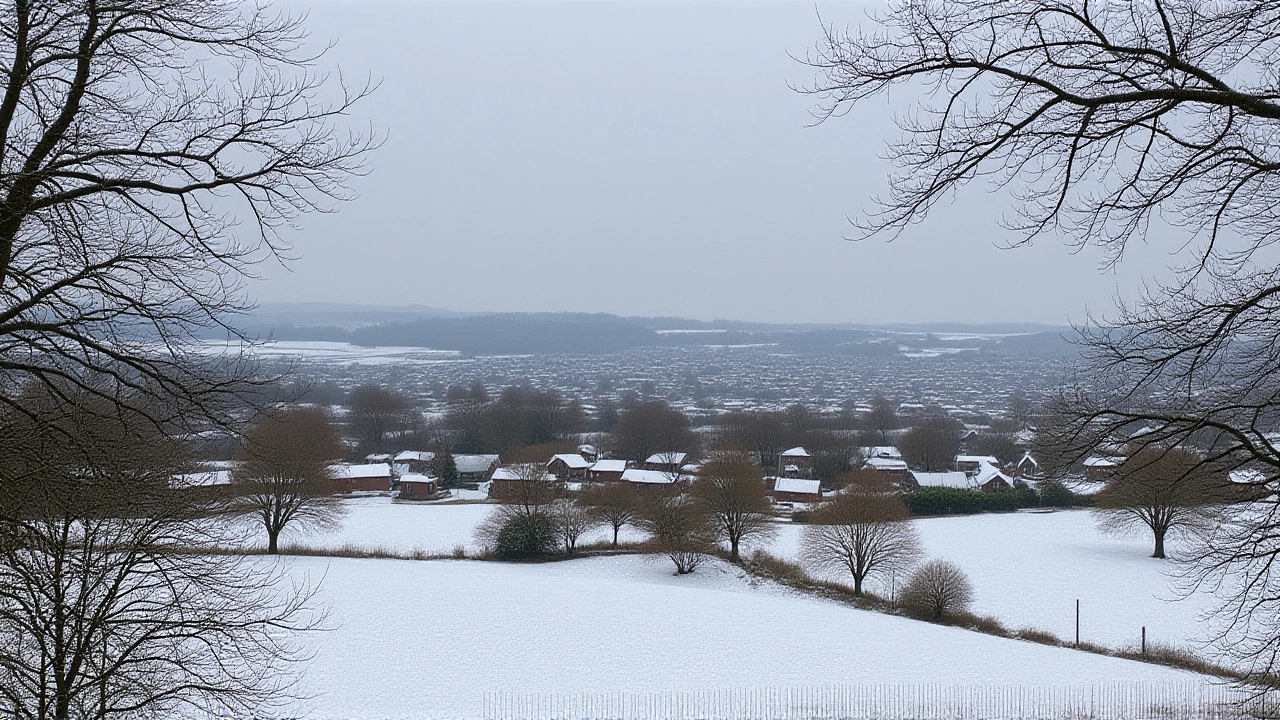UK hits coldest night of season as -11.7°C temperatures trigger amber alerts and travel chaos
 Nov, 21 2025
Nov, 21 2025
On Thursday, November 20, 2025, the United Kingdom shivered through its coldest night of the autumn season, with temperatures plunging to -11.7°C in remote parts of northern Scotland. The extreme cold sparked amber health alerts from the UK Health Security Agency for northern England and yellow ice warnings stretching from northeast Scotland down to the eastern coast of England. Schools shuttered by the hundreds. Roads turned into skating rinks. And for many, the simple act of stepping outside became a calculated risk.
When the Freeze Hit Hard
The chill didn’t sneak up—it crashed in. By midnight, the Met Office confirmed that Northern Ireland, England, and Wales had all recorded their lowest temperatures of the 2025 autumn season. In rural Highland villages like Braemar and Aviemore, thermometers dipped to -12°C. Even in towns like Durham and York, frost clung to windows well into the morning. "It’s not just cold," said one resident in Berwick-upon-Tweed. "It’s the kind of cold that gets inside your bones. You can hear it crackling in the trees."
Chief forecaster Steve Willington of the Met Office warned the public: "We’re still in the grip of a cold, Arctic air mass today and into Friday. Ice will form on untreated surfaces. Travel disruption is inevitable." The warnings, active until 11:00 AM on Friday, November 21, 2025, specifically flagged roads, pavements, and bridges where moisture from earlier sleet had frozen solid overnight.
Health Risks and School Closures
The UK Health Security Agency escalated its response to amber level—a rare move for autumn—warning that vulnerable populations, especially the elderly and those with respiratory conditions, faced heightened risks of hypothermia and cardiovascular strain. Emergency services in Newcastle and Leeds reported a 40% spike in cold-related 999 calls compared to the same period last year.
Across the country, more than 600 schools closed on Thursday, from Cumbria to Lincolnshire. In Aberdeen, headteachers cited unsafe walking routes and frozen playgrounds. "We had a child slip on ice getting off the bus yesterday," said one principal in Moray. "We couldn’t risk another.
The Met Office’s National Highways partnership rolled out updated guidance for drivers: slow down, increase following distances, avoid sudden braking. Snow plows were deployed in over 200 locations, but many rural roads remained impassable. The Scottish Highlands saw the worst conditions, with blizzard-like visibility in places like the Cairngorms.

Why This Cold Snap Is Different
This isn’t just a typical November dip. The UK has seen a persistent northerly airstream since mid-November, drawing frigid air directly from the Arctic Circle. Unlike winter storms that bring heavy snowfall, this event was defined by prolonged clear skies and calm winds—perfect conditions for radiative cooling. As the sun set, heat escaped rapidly from the ground, and temperatures plunged faster than forecasters anticipated.
"We’ve had colder nights in December," noted Dr. Eleanor Moss, a climatologist at the University of Edinburgh. "But this is the earliest we’ve seen temperatures this low in over a decade. The ground hadn’t even cooled properly from autumn. That made the freeze more abrupt—and more dangerous."
Meanwhile, the Midlands and Wales faced a different challenge: saturated soil from recent rain turned into slick, hidden ice sheets. "It’s not snow you can see," said a Welsh road maintenance worker. "It’s black ice. The kind that doesn’t show up until your car’s already sliding."
What Comes Next
Relief is coming—but slowly. The Met Office predicts a major shift this weekend as a milder Atlantic weather system moves in, bringing rain and wind to replace the Arctic grip. Temperatures are expected to climb into the 3–6°C range by Sunday, a welcome rise after days below freezing.
But don’t expect warmth to return all at once. "Conditions will remain chilly," Willington cautioned. "And by Monday, cooler air may creep back into the far north, bringing the chance of wintry showers again." Rural areas in northern Scotland could still see flurries through next week.
The lingering concern? Infrastructure. Many local councils ran out of salt. Heating bills spiked. And for thousands without proper insulation, the cold has become a financial crisis as much as a physical one.

Historical Context
While not record-breaking on a national scale, this event ranks among the top five coldest November nights in the UK since 2000. The last comparable freeze occurred in November 2010, when temperatures fell below -10°C in 17 counties. But back then, the country had more robust stockpiles of grit and better-coordinated emergency responses. This year, many local authorities admitted they were caught off guard by the speed and severity of the drop.
"We’re not prepared for this anymore," said a former Met Office meteorologist, speaking anonymously. "Climate change didn’t make winters disappear—it made them more unpredictable. One week you’re wearing a jacket, the next you’re digging out your thermal socks."
Frequently Asked Questions
How does this cold snap affect elderly people in the UK?
The UK Health Security Agency reported a 35% increase in hospital admissions for hypothermia and respiratory distress in northern England during the freeze. Elderly residents without central heating or proper insulation are at highest risk. In areas like Cumbria and Northumberland, community volunteers delivered hot meals and checked on over 12,000 vulnerable households. The agency urged people to keep rooms at 18°C or above, especially at night.
Why were so many schools closed when the temperature was only -11.7°C?
It wasn’t just the temperature—it was the ice. Even at -6°C, untreated pavements and school driveways turned into invisible hazards. In regions like East Anglia and the Scottish Borders, black ice formed overnight after light sleet. One school in Berwick reported three children injured on icy steps. Headteachers prioritized safety over attendance, especially since many buses couldn’t operate safely on frozen roads.
What’s the difference between amber and yellow weather warnings in the UK?
Amber warnings from the Met Office mean ‘be prepared’ for significant disruption—like health risks or widespread travel delays. Yellow means ‘be aware’ of possible minor impacts. The amber cold health alert for northern England signaled a real threat to life, especially for older and vulnerable people. This was the first amber cold health alert issued in November since 2018.
Will this cold spell return next winter?
Climate scientists caution against linking single events to long-term trends. But patterns suggest Arctic air outbreaks are becoming more frequent in early winter due to weakening polar jet streams. While overall winters are warming, the coldest snaps are becoming more intense and unpredictable. The UK’s Met Office now includes these ‘extreme cold events’ in its seasonal risk assessments for the first time.
How did the UK’s grit supply hold up during this freeze?
Many councils reported salt reserves running dangerously low by Thursday evening. In Yorkshire, some areas had only 48 hours of grit left. The government activated emergency stockpiles from the National Highways depot in Doncaster, and two military trucks were deployed to deliver salt to remote Highland villages. The incident has prompted a review of winter preparedness budgets, with local councils now required to maintain at least 10 days’ worth of salt by next October.
What should drivers do if they encounter black ice?
Stay calm. Don’t brake or steer sharply. Ease off the accelerator and keep the wheel straight. Black ice often forms on bridges, overpasses, and shaded roads. If you feel the car sliding, avoid overcorrecting. The Met Office recommends driving at 20 mph or less on suspect roads and checking their real-time ice map before traveling. Most accidents occur in the first hour after sunrise, when temperatures hover just below freezing.